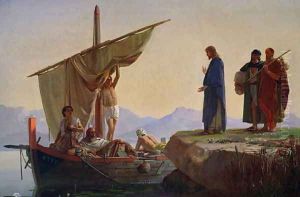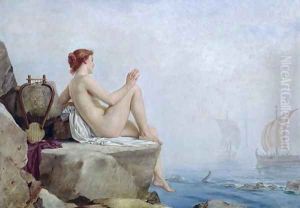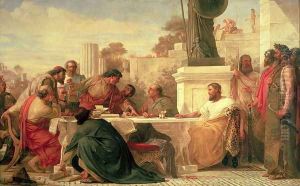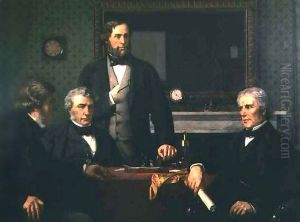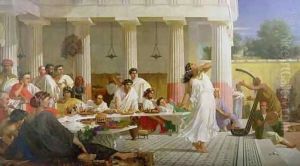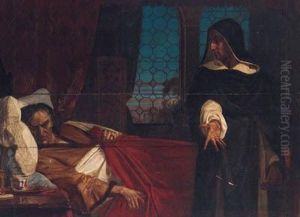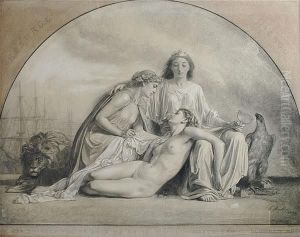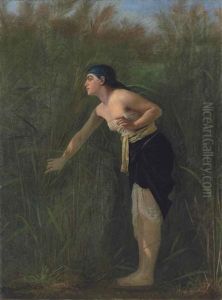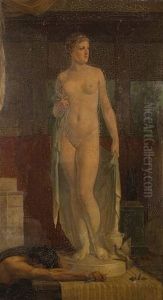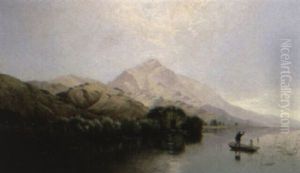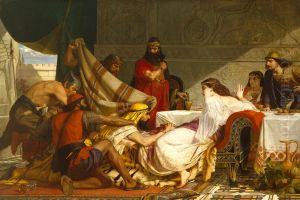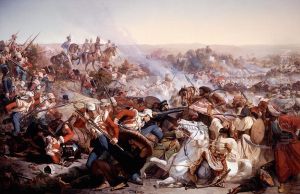Edward Armitage Paintings
Edward Armitage was a significant English painter of the Victorian era, known primarily for his historical and classical subject matter. Born on May 20, 1817, in London, he was part of a generation of artists who were deeply influenced by the grand historical narratives and the academic painting traditions of their time. Armitage's education in art began under the tutelage of Henry Sass in London before he moved to Paris to study at the prestigious École des Beaux-Arts under the guidance of Paul Delaroche. It was during this period that Armitage was exposed to the French academic style and the works of Delaroche, which significantly shaped his approach to painting.
Armitage's career took a definitive turn when he won the Royal Academy's gold medal in 1842 for his work 'The Triumph of Tasso,' a recognition that marked his entry into the ranks of respected British artists. His success in competitions and exhibitions laid the groundwork for his subsequent recognition and his election as an Associate of the Royal Academy in 1867, and later as a Royal Academician in 1872.
Throughout his career, Armitage was known for his large-scale historical paintings that often depicted scenes from ancient history and mythology. Notable works include 'The Battle of Meanee,' exhibited in 1847, which depicted a significant battle of the British conquest of Sindh, and 'Retribution,' in 1858, which was inspired by the Indian Rebellion of 1857. These paintings were celebrated for their grandeur, attention to detail, and the use of dramatic lighting to enhance the narrative.
Armitage also contributed to public commissions, most notably the fresco 'The Spirit of Religion' for the House of Lords in 1848-1852, as part of a series of murals intended to decorate the new Palace of Westminster. His work in fresco was part of a broader revival of the medium in Victorian Britain, influenced by similar movements in Europe.
Despite his success, Armitage's work, like that of many of his contemporaries, fell out of favor towards the end of the 19th century as tastes shifted towards Impressionism and Post-Impressionism. However, in recent years, there has been a renewed interest in Victorian academic art, and Armitage's contributions are increasingly recognized for their technical skill and historical significance.
Edward Armitage died on May 24, 1896, in London. His legacy is preserved through his works, which are held in collections across Britain, including the Tate Gallery and the Royal Academy of Arts, reflecting his enduring contribution to the British art scene of the 19th century.

